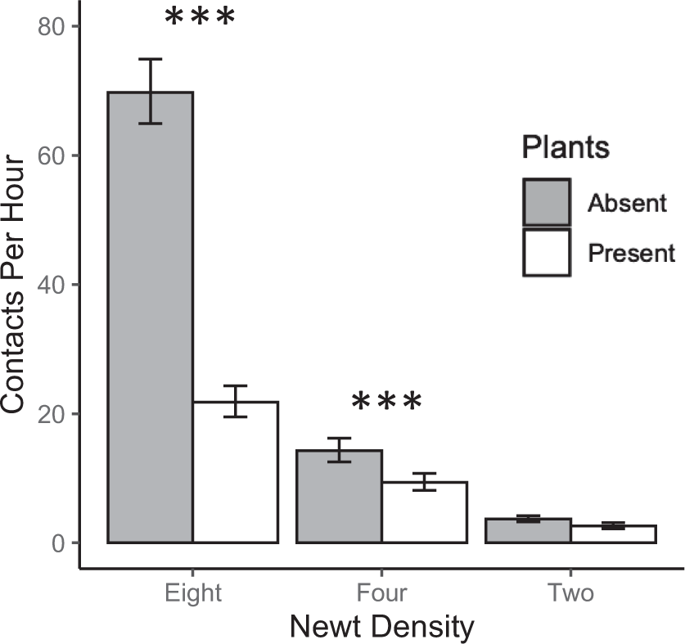Scientific Reports ( IF 3.8 ) Pub Date : 2020-03-27 , DOI: 10.1038/s41598-020-62351-x Daniel A Malagon 1 , Luis A Melara 2 , Olivia F Prosper 3, 4 , Suzanne Lenhart 4 , Edward Davis Carter 1 , J A Fordyce 5 , Anna C Peterson 1 , Debra L Miller 1, 6 , Matthew J Gray 1

|
Batrachochytrium salamandrivorans (Bsal) is an emerging invasive pathogen that is highly pathogenic to salamander species. Modeling infection dynamics in this system can facilitate proactive efforts to mitigate this pathogen's impact on North American species. Given its widespread distribution and high abundance, the eastern newt (Notophthalmus viridescens) has the potential to significantly influence Bsal epidemiology. We designed experiments to 1) estimate contact rates given different host densities and habitat structure and 2) estimate the probability of transmission from infected to susceptible individuals. Using parameter estimates from data generated during these experiments, we modeled infection and disease outcomes for a population of newts using a system of differential equations. We found that host contact rates were density-dependent, and that adding habitat structure reduced contacts. The probability of Bsal transmission given contact between newts was very high (>90%) even at early stages of infection. Our simulations show rapid transmission of Bsal among individuals following pathogen introduction, with infection prevalence exceeding 90% within one month and >80% mortality of newts in three months. Estimates of basic reproductive rate (R0) of Bsal for eastern newts were 1.9 and 3.2 for complex and simple habitats, respectively. Although reducing host density and increasing habitat complexity might decrease transmission, these management strategies may be ineffective at stopping Bsal invasion in eastern newt populations due to this species’ hyper-susceptibility.
中文翻译:

寄主密度和栖息地结构影响寄主接触率和沙门氏菌的传播。
拟南芥Batrachochytrium salamandrivorans(Bsal)是一种新兴的入侵病原体,对sal物种具有高度致病性。在该系统中对感染动态进行建模可以促进主动努力,以减轻这种病原体对北美物种的影响。鉴于其广泛分布和高丰度,东部new(Notophthalmus viridescens)有可能显着影响Bsal。流行病学。我们设计了以下实验:1)在给定宿主密度和栖息地结构不同的情况下估计接触率; 2)估计从感染者传播到易感个体的可能性。使用从这些实验中产生的数据得出的参数估计值,我们使用微分方程系统对一群new的感染和疾病结果进行了建模。我们发现宿主的接触率与密度有关,而增加栖息地的结构会减少接触。即使在感染的早期,由于new之间的接触而引起的Bsal传播的可能性也很高(> 90%)。我们的模拟显示Bsal的快速传播在引入病原体后的个体中,感染率在一个月内超过90%,三个月内>的死亡率> 80%。对于复杂的和简单的生境,东部new的Bsal的基本生殖率(R 0)估计分别为1.9和3.2。尽管降低寄主密度和增加栖息地的复杂性可能会减少传播,但由于该物种的高度易感性,这些管理策略对于阻止东部eastern种群的Bsal入侵可能无效。











































 京公网安备 11010802027423号
京公网安备 11010802027423号